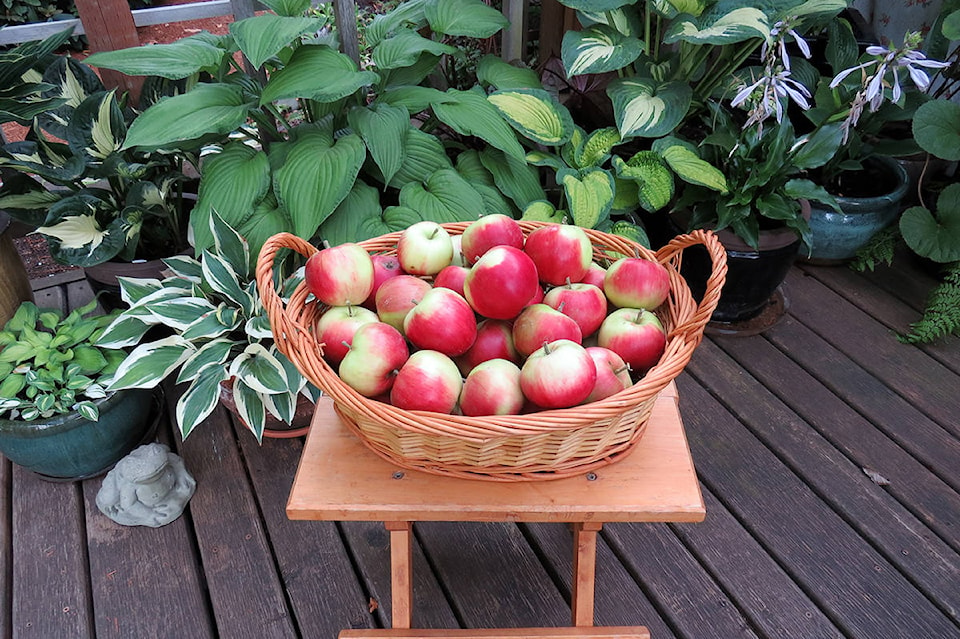Leslie Cox
Special to The Record
Do you have a favourite plant you really wish you had more of in your garden landscape?
A few readers have queried me about propagation and now is an excellent time to start cuttings to plant next spring.
We have a few plants I will be snipping and propagating in the next couple of weeks. One is my Aronia melanocarpa (black chokeberry) shrub. I am currently keeping a close watch on the berries. They are almost ripe, which means the robins will swoop in soon and claim the entire crop. It is mostly robins who covet them, for some reason. Can’t blame them. The black berries may be sour, but their antioxidant level outstrips 12 other berries tested, including wild blueberries.
Through most of August we never see any robins in our garden but somehow, they always know when the aronia berries are ripe and swarm all over the shrub. So, my basket is at the ready. Need to get my share before they clean the bush. Once the berries are harvested and processed, I can take cuttings to propagate more plants.
There are other plants suited for taking cuttings as we head into fall; weigela, choisya (mock orange), berberis (barberry), roses, spiraea, to name a few. Key is “hardwood.” That is the type of branch you are looking for.
Also, the selected plant or plants should not be in flower and fruits must be harvested.
Unfortunately, space is limited here, but you will find detailed instructions on my website (duchessofdirt.ca) on how to take cuttings and prepare them for potting. There is also information on a few different potting mediums for cuttings. (Look in “How To” under “In the Garden” on the main menu bar.)
***
If those fruit flies were not enough for you, the fall webworms are now loose. I found one crawling up the back door and one on an aronia leaf recently. Unfortunately, there were a few web nests in the tree tops of our two ‘Crimson King’ maples and a birch which were out of ladder reach. This means we will be chasing after the caterpillars, one by one, now they have descended from the heights. It is so much easier when you can cut down the nest with all the young larvae inside and destroy it. And believe me, John cut down a few nests.
A few readers have commented on the high numbers of fall webworm nests this year. It is true, there has been an outbreak, but be thankful there is only one generation a year. We should also be thankful the higher numbers usually last no more than two years running before they drop back to “normal” populations. You can help the predators by killing as many of the caterpillars as you can find. Starting now, as it will not be many weeks before the caterpillars move into their pupal stage where they will remain over winter.
If you miss a few fall webworm caterpillars, the pure white adult moths will appear in mid- to late May next year. Get out the butterfly net before the females start laying eggs - up to 1,000 each. (More info and photos of this pest are on my website under “In the Garden”.)
On the upside, we harvested a good crop of Akane (ah-KAH-nay) apples from our espalier apple tree. One eight-foot branch yielded 41 apples with a total weight of almost nine pounds. All were in excellent shape, apart from two being slightly chewed by sow bugs around their stems. There were also some garden spider webs in a couple of clusters – likely responsible for no other sow bugs getting an apple feast. Say what you want about spiders - they are a huge help in the garden.
Next on the harvest list: Honeycrisps!
Leslie Cox co-owns Growing Concern Cottage Garden in Black Creek. Her website is at www.duchessofdirt.ca and her column appears every second Thursday in the Record.
